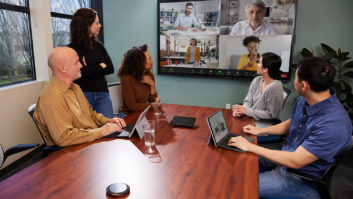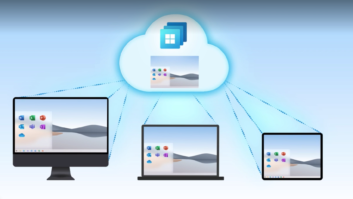 While a widespread return to work was expected in 2021, the arrival of the Delta and Omicron variants of Covid-19 has led to the universal acceptance that the pandemic is likely to be with us longer than previously expected, and that employers will have to plan accordingly.
While a widespread return to work was expected in 2021, the arrival of the Delta and Omicron variants of Covid-19 has led to the universal acceptance that the pandemic is likely to be with us longer than previously expected, and that employers will have to plan accordingly.
Organisations that have adopted a ‘wait and see’ approach to technology expenditure are increasingly recognising that they will need to invest in a long-term hybrid work model, where employees are distributed across both remote and centralised locations, such as offices.
The limited return to work seen in 2021 has proved more complicated than many anticipated. Companies can function well when everyone is in the office, while UC&C platforms like Microsoft Teams have proved remarkably successful in keeping companies connected when everyone is remote. However, many organisations are ill-equipped to deal with a combination of in-person and remote team members.
Too many people have returned to the office only to find they are having to work in the same way as they would at home. What is the point of going back if you’re going to spend the whole day wearing headphones and speaking to remote colleagues on Microsoft Teams?
The focus for collaboration technology providers must be on catering to the new needs of the hybrid work model. Organisations must invest in technology that facilitates the interaction between all combinations of in-person and remote members, ensuring that both groups benefit.
This acknowledgment of a hybrid work model means that there is also significant investment and attention on the home office market. Home working, at least part of the time, presents significant benefits for many, and these benefits will continue post-pandemic.
Home working has gone from a temporary solution to a permanent set-up, and that requires greater investment in technologies that improve the experience. This includes higher resolution professional webcams, office headsets, speakerphones (for those who do not want to spend the day wearing a headset), as well as lighting and backgrounds.
The pandemic has converted a significant proportion of knowledge workers into digital content creators, even if that content is being shared primarily via Microsoft Teams or Zoom. Traditional collaboration vendors are increasingly looking for inspiration from streamers and YouTubers, who have long been experts at creating good-looking and professional video and audio from their homes. Expect 2022 to bring a greater focus on lighting, backgrounds and personal microphones.







